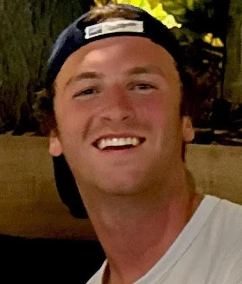
 August 26, 2014 New York, NY—The International Center of Photography (ICP) and the United States...
August 26, 2014 New York, NY—The International Center of Photography (ICP) and the United States...
August 26, 2014
New York, NY—The International Center of Photography (ICP) and the United States Holocaust Memorial Museum are pleased to announce a groundbreaking joint project to make photographer Roman Vishniac’s vast archive available to the public and researchers. Together, the country’s premier photography institution and the nation’s leading Holocaust research and educational center developed an innovative digital database to facilitate unprecedented access to the archive, which includes 40,000 objects and spans more than six decades. Vishniac created some of the most enduring images of eastern European Jews immediately before the Holocaust and later pioneered techniques in photo microscopy.
This collaboration represents a unique model for the future of archives and information sharing between institutions with wide-ranging missions. The project takes advantage of the distinct resources and perspectives of ICP and the Museum to develop a multifaceted understanding of Vishniac’s work. The database, which is accessible to the public at vishniac.icp.org (external link), already includes all of Vishniac’s 9,000 negatives—most of which have never before been printed or published. The negatives were digitized for ICP by Ardon Bar-Hama (who also digitized the Dead Sea Scrolls) using the highest possible resolution. Additional materials—including prints, contact sheets, films, correspondence, interviews, recordings, and ephemera—are being added every day. Information on the project and new details uncovered about some of Vishniac’s most iconic images are available at ushmm.org/vishniac.
ICP and the Museum invite scholars and students across a wide range of disciplines, families across generations, and members of the public to explore the archive, contribute their research and family stories, and help identify the people and places depicted in the images. The diverse perspectives brought together by this unique effort, and by the work of a dedicated group of internationally recognized scholars, have already yielded exciting discoveries.
“We believe this initiative represents a new model for digital archives, and we are excited to bring this collection to an even-wider audience,” said Mark Lubell, ICP’s executive director. “Our shared goal is to make the images available for further identification and research, deepening our knowledge of Vishniac’s work and the people and places he recorded in his images.”
“This project will introduce many people to one of the 20th century’s preeminent photographers while greatly increasing our understanding of his subjects,” said Michael Grunberger, director of collections at the United States Holocaust Memorial Museum. “We are excited to be working with ICP to make Vishniac’s work accessible to new generations and hope that it inspires them to learn more about him and Holocaust history.”
Roman Vishniac (1897–1990)
The archive encompasses Roman Vishniac’s entire career. Born in Russia to a prosperous Jewish family, Vishniac immigrated to Weimar Berlin in 1920 in the aftermath of the Russian Revolution. As an avid amateur photographer, he took to the streets with his camera, documenting his new, adopted city while experimenting with modern and avant-garde approaches to framing and composition. Documenting the rise of Nazi power, he focused his lens on the ominous signs of oppression that soon formed the backdrop of everyday life. From 1935 to 1938, while living in Berlin, he was commissioned by the Paris office of the American Jewish Joint Distribution Committee (JDC), the world’s largest Jewish relief organization, to photograph impoverished communities in Central and Eastern Europe. As Vishniac was creating what would soon become the most widely recognized and reproduced photographic record of that world, the great social documentary photographers of the 1930s, including Walker Evans and Dorothea Lange, were involved in similar projects, photographing impoverished communities in the United States.
Following his imprisonment and eventual release from an internment camp in France, Vishniac reunited with his family and arrived in New York on New Year’s Day 1941 and soon opened a portrait studio. Working to make ends meet while establishing himself as a pioneer in the field of scientific color photo microscopy, Vishniac documented the lives of immigrants and survivors as well as American Jewish community life, including schools, hospitals, community centers, and refugees. In 1947, he returned to Europe on behalf of numerous relief organizations, photographing the ruins of Berlin and the efforts of Jewish survivors to rebuild their lives in displaced persons camps.
Traveling Exhibition
ICP’s critically acclaimed traveling exhibition Roman Vishniac Rediscovered will be on tour through the end of 2016. Lauded by the Economist as “magnificent and revelatory” and praised by Time magazine as “a revelation not only to the uninitiated, but also to those who might have felt that they already knew all there was to know about the long-unheralded master,” the exhibition includes, for the first time, work that spans the photographer’s entire career. For a full schedule of current and upcoming venues, please visit vishniac.icp.org/traveling-exhibition (external link).
In September 2015, the International Center of Photography (in conjunction with DelMonico Books / Prestel) will publish Roman Vishniac Rediscovered, edited by Maya Benton. This 384-page monograph will feature more than 400 works by Vishniac, many of them previously unpublished, and essays by 23 leading scholars in the history of photography and Jewish cultural studies.
Supporters
This project is made possible with support from Mara Vishniac Kohn, whose generosity founded the Roman Vishniac Archive at ICP, and from the Andrew and Marina Lewin Family Foundation, Estanne and Martin Fawer, the David Berg Foundation, Righteous Persons Foundation, National Endowment for the Arts, Olitsky Family Foundation, the ICP Exhibitions Committee, James and Merryl Tisch, Koret Foundation, Caryl and Israel Englander, Taube Foundation for Jewish Life and Culture of the Jewish Community Endowment Fund, the Bernard Lee Schwartz Foundation, Tamar and Eric Goldstein, Laura and Murray Huberfeld, additional anonymous donors, and by public funds from the New York City Department of Cultural Affairs in partnership with the City Council. ICP also appreciates the support of the Conference on Jewish Material Claims Against Germany (Claims Conference), which allocates funds to organizations around the world engaging in Holocaust education, documentation, and research that preserves the memory of Jewish victims of Nazi persecution and the legacy of the Shoah.
About the Museum
A living memorial to the Holocaust, the United States Holocaust Memorial Museum inspires citizens and leaders worldwide to confront hatred, prevent genocide, and promote human dignity. Its far-reaching educational programs and global impact are made possible by generous donors. For more information, visit ushmm.org.
About ICP
The International Center of Photography (ICP) is the world’s leading institution dedicated to the practice and understanding of photography and the reproduced image in all its forms. Through its exhibitions, educational programs, and community outreach, ICP offers an open forum for dialogue about the role images play in our culture. Since its founding, ICP has presented more than 700 exhibitions and offered thousands of classes, providing instruction at every level. ICP is a center where photographers and artists, students and scholars can create and interpret the world of the image within the center’s comprehensive educational and archival facilities. Visit www.icp.org (external link) for more information.
Content from United States Holocaust Memorial Museum
Originally published at https://www.ushmm.org/information/press/press-releases/museum-partners-with-international-center-of-photography
originally published at HUMAN RIGHTS - USA DAILY NEWS 24

